Imagine a family—let’s call them the Carters—navigating their state’s school choice options. They live in a blue-collar, inner-ring suburban neighborhood with decent schools, but their second-grade son is struggling socially and academically at their public elementary school. The Carters are desperate to make a change. They wonder if a charter school, a nearby private school, or even a specialized magnet school might be a better fit for their child, but they have limited means to pay for tuition. They heard that their state has “universal choice,” but the Carters quickly discover that exercising their choice won’t be easy. They struggle to understand what these different schools offer and how they perform academically. They’re confused by myriad application processes, unclear transportation options, and a general lack of straightforward information. Despite policies that supposedly empower them, they’re left feeling overwhelmed, frustrated, and helpless.
Unfortunately, the Carters’ story isn’t unique. It’s emblematic of today’s school choice reality.
The Problem: A Patchwork of Policies
Across the U.S., states are embracing various forms of school choice, from tax credits, vouchers, and education savings accounts (ESAs) to charter schools, virtual schools, magnet schools, and intra-district transfers. In recent years, several states have passed new laws to expand private school choice. Each law promises to meet the needs of students and families. Yet, the rapid expansion of these statewide policies has led to confusion, inefficiencies, and significant gaps in access, especially for families who need choices the most.
Market advocate and economist Milton Friedman famously observed, “Markets require rules of the road to function.”Robust markets, including the K-12 educational market, depend on conditions, or “market enablers,” such as fair competition, transparent information, and consumer access to choices, that allow markets to function, to promote fairness, stability, and efficiency. When it comes to education, the market consists of schools (the goods offered) and students and families (the consumers). The market enablers are the variable offerings that governments, nonprofits, or public/private partnerships provide. For example, states can provide clear scorecards that reflect how well public schools are educating students, or school choice programs that guarantee student transportation within city or county limits. Without market enablers, well-intended policies and programs will fall short of expectations and may even have a net negative effect.
Consider Detroit in the 2010s. An explosion of charter schools combined with a massive school closure effort by Detroit Public Schools led to approximately 200 schools serving roughly 100,000 students by 2020, split evenly between district and charter schools. After decades of severe academic challenges, this well-intentioned but disjointed effort failed to provide families with access to quality schools. Some neighborhoods were left with an oversupply of half-empty buildings, while some needs remained critically underserved. Safety barriers, a lack of transportation, inequitable special education programming, and insufficient information exacerbated the issue, and the lowest-income families and families of students with special education needs were less likely to access choice at all. This wasn’t just inefficient; it was chaotic for families and fell woefully short of the goal of school choice. At the same time, the city wasted taxpayer resources that could have supported communities with enhanced instruction, better student transportation, or improved learning facilities.
The Solution: Empowering Families through Smart Market Enablers
Family-centered market enablers were missing in Detroit and other cities like it. Now, in states with rapidly expanding choice, those market enablers are still absent.
States serious about effective school choice must use smart market enablers to shift the burden off of families. They must make it easier for families to find and choose the education options that work for them. Families should not have to navigate dozens of websites or juggle multiple complex applications to district schools, charter schools, and voucher and ESA programs. Instead, states should build local, unified information and enrollment systems with user experience designs similar to those of the websites we use to compare and purchase computers, cars, or even healthcare plans. Then, parents could see all available options side by side, with clear information about seat availability, relevant performance metrics, transportation options, and more.
Families also need to know that options besides their neighborhood schools exist in the first place, which means that states must invest in family engagement and robust communication. Underlying those efforts, states should also collect and use data internally to understand which communities are not being served well and why—and then give power (and support) to those communities to identify and develop their own solutions.
Choice must be practically accessible, not just theoretically available. Transportation remains a significant barrier, particularly for lower-income families. An ESA or voucher program that covers tuition but ignores transportation excludes the families that choice programs most seek to empower. Offering transportation subsidies or shared transportation hubs ensures all families can exercise genuine choice and makes the market fairer without constraining it.
As the number of students who need special education services continues to rise, families are increasingly seeking more school choice options. At the same time, private schools are not required to admit all, or even any, of their applicants, and legal protections for students with disabilities may not apply. Even if a private school voucher program is available, it may not be a viable solution for families of students in special education courses. In the short term, families must be equipped to understand and evaluate their options. In the long term, states must deeply explore the priorities and policies that come along with private schools receiving public funds, particularly as they relate to services for the most vulnerable students.
Avoiding Financial and Quality Pitfalls
There are also plenty of financial reasons why states should embrace coherent market enablers. Rushing into expansive voucher or ESA programs without clear fiscal accountability or outcome measurement can waste public funds and undermine public trust. These issues led to states like Utah, Arkansas, and Arizona adding tighter guidelines and controls to their policies. Accountability isn’t heavy-handed government intrusion; it’s market clarity.
District schools can’t be left to the wayside, either. Even in the most ardent choice states like Florida, Arizona, and Ohio, the majority of students still learn in traditional district school classrooms. While states might increase school choice options for families that want them, district schools remain the school of choice for many families—including rural families, families of students with disabilities, and families whose school choice options didn’t serve them well.
Alongside incoherent policy planning and a lack of market enablers, districts are saddled with unpredictable enrollment and budgeting challenges, exacerbating a vicious cycle of quality decline. Quality district schools are a part of quality school choice. Thoughtful planning and transparent, stable funding policies help districts plan and prepare for what’s to come.
From Policy Proliferation to Market Optimization
Designing effective school choice policy isn’t about overwhelming families with options. It’s about intentionally designing school choice enablers with families at the center. States must shift from policy proliferation to market optimization. A unified vision, aligned accountability, sustainable funding, and authentic community engagement are not just good policy—they’re essential market design. This doesn’t stifle choice. In fact, it facilitates genuine, informed decision-making and—when done well—better student outcomes.




